The Portrayal of Women in Disney Films

An introduction into Disney Films
Disney films have changed and adapted hugely in recent decades, now straying away from labeling the female characters as the damsel in distress, and magnifying the unrealistic beauty standards and body proportions.
Now Disney is focusing on further inclusion and eradicating the stereotypes around gender roles and how women look.
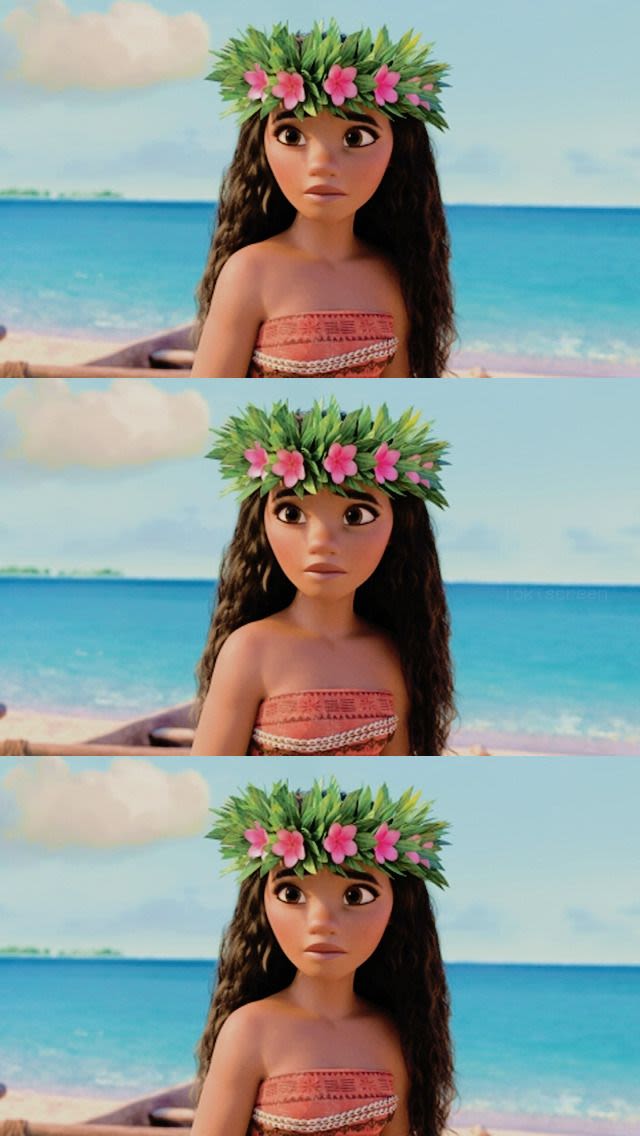
Disney's stereotypes
Disney films portray women to look a certain way, with female characters having unrealistic body standards, for example, Disney princesses are seen with extremely small waists, big eyes, and thin wrists. These physical features are extraordinarily unrealistic, misleading, and damaging, especially when marketing these films to young children. Not only could young girls potentially feel they have to look similar to their favourite princesses, but they could also begin to lose confidence due to this.
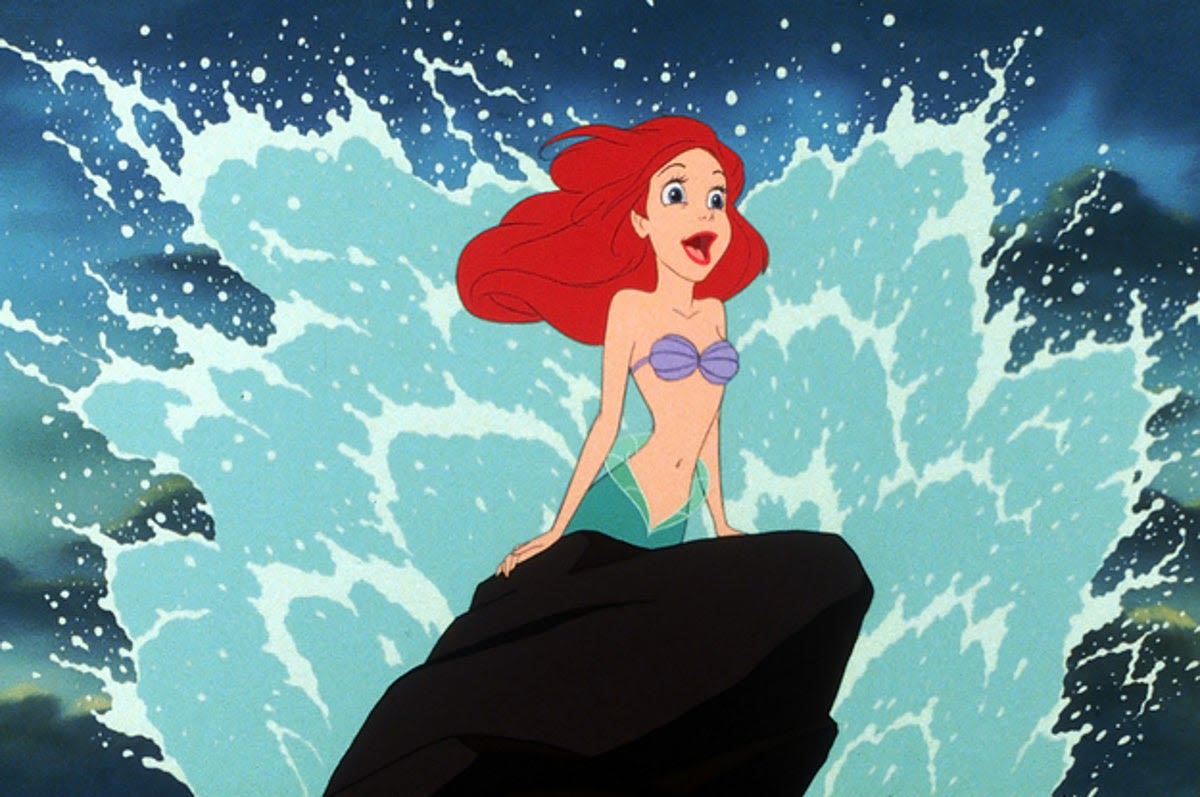
Snow White and the Seven Dwarfs
A key example of this is the film snow white and the seven dwarfs. Snow white is seen caring for seven male dwarfs, however, has to get a man to save her. This sexism against women is apparent in many films, however, now we are beginning to see a change in the way women are represented. Other films highlight the key themes throughout many films, with this being that the princesses play the role of the damsel in distress, for example, Sleeping Beauty and Cinderella.
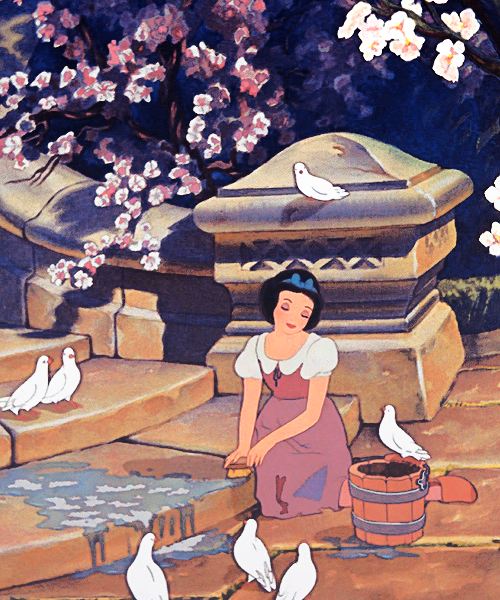
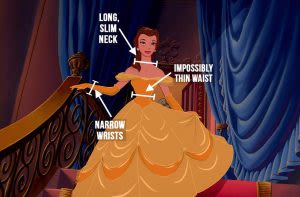
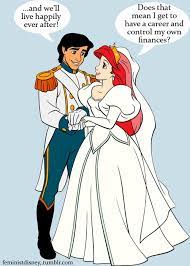
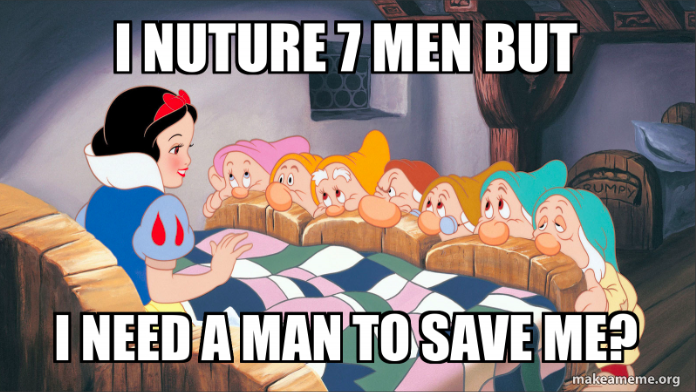
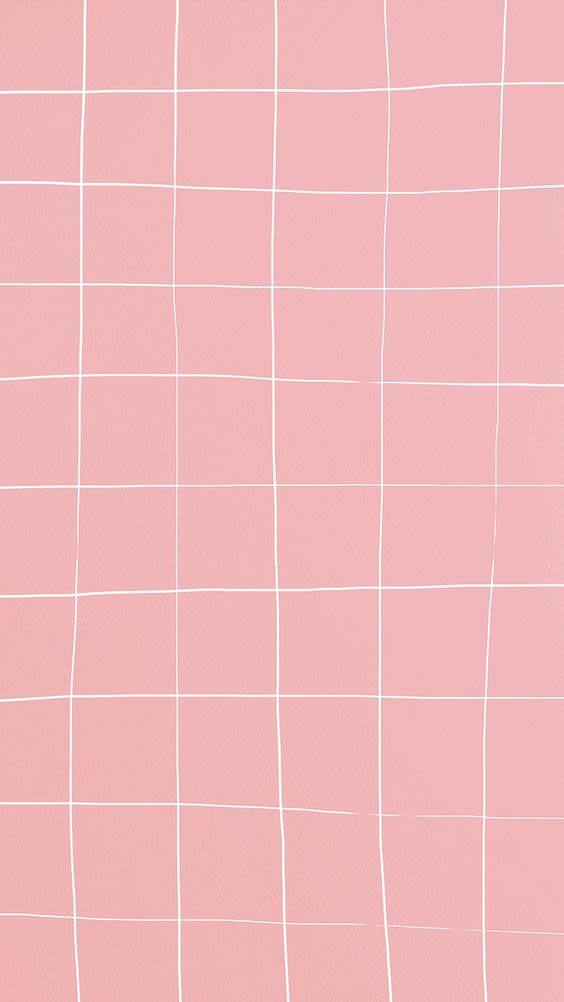
The Bechdel Test
The Bechdel test can be used throughout these films. The Bechdel test focuses on the representation of women and tests whether two women are able to have a conversation without mentioning men. It is evident to see that almost all of the Disney films fail the Bechdel test, which highlights the notion that Disney films rely heavily on women feeling unpowerful unless they are in the presence of a man, and in this case, a prince. Young girls who watch these films will subconsciously feel the same way and believe, that to be successful and happy in life, a man has filled this void, which is completely the wrong message to be sending to young children who are easily influenced.
Disney has also failed in the gendered numeric representation in its films. A study was conducted and found that in the newest and most successful Disney films, only 28% of characters were female and 63% of characters were male, with the last 9% of characters being categorised as non-gendered.
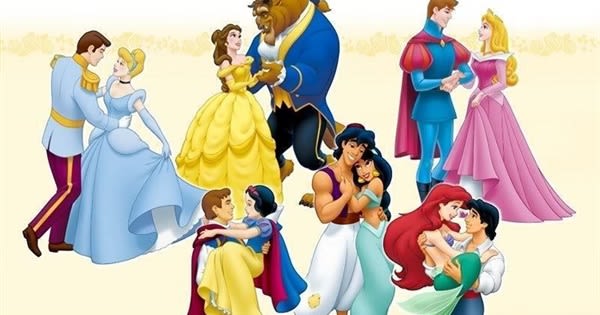
The Evolution of Disney Princesses
This video shows how far Disney princesses have truely come since their ‘damsel in distress’ era.

Arguably, one of Disney's most popular and adored elements is its princesses. But throughout the rise in popularity of social media and therefore of movements such as MeToo, millions of people have become aware of the potential messages these Disney princesses are sending to their target audience of young and impressionable children.
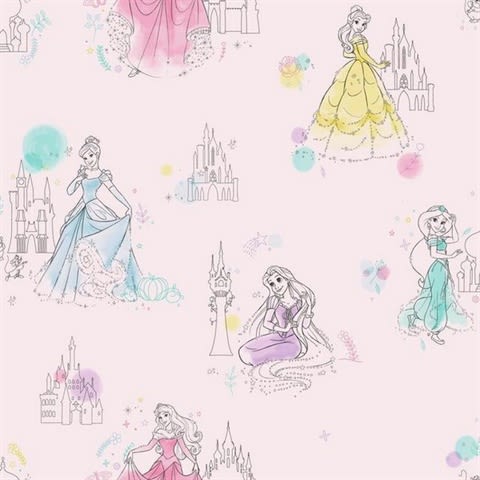
Disney and the Damsel in Distress
The ‘first golden age’ was kickstarted by Snow White with its release in the year 1937. Back in its time, it was coined a groundbreaking animation due to its technicolour, soundtrack, and multiplane camera work. Although unsurprising due to the year in which it was released, Snow White has received an immense amount of backlash due to the main message it portrays. The ‘damsel in distress’ waiting for her prince to save her is very typical for Disney princess movies of this timeframe, and almost the only storyline they seem to use as snow white isn't the only Disney princess movie this is seen in. Being constantly shown influential female characters that are constantly needing to be saved by powerful men creates extreme tunnel vision for young girls. Instead of being shown how to build strength, confidence and self-love, a message of heavily relying on men for all three of these is forced into the minds of young girls, but also young boys - which could potentially affect their perception of how women are meant to be treated.
There are also elements of understanding consent that some Disney movies within this era struggle to get right. As mentioned before, With MeToo, Snow White has been a prime example on the subject of consent—a princess deep in sleep is kissed by a prince as “true love’s kiss”, without checking with her if that’s okay, sending the wrong message to children. (Fernando, 2022).

Disney's 'Third Golden Age'
We are currently living to watch and experience Disney’s ‘third golden age’ unfold before us as viewers. And the differences in messages between this and the ‘first golden age, are like night and day. Movies like Moana and Frozen, have completely different and more inclusive storylines in comparison to Snow White as both are not solely focused on unfolding a love story about a princess who needs to be saved. When focusing on Moana it’s noted to have superficial connections to prior Disney princesses, there are plenty of deliberate breaks from that tradition that make her stand out—especially in the movie’s depiction of Pacific Islander culture and the complete absence of a love interest. (Harris, 2016).
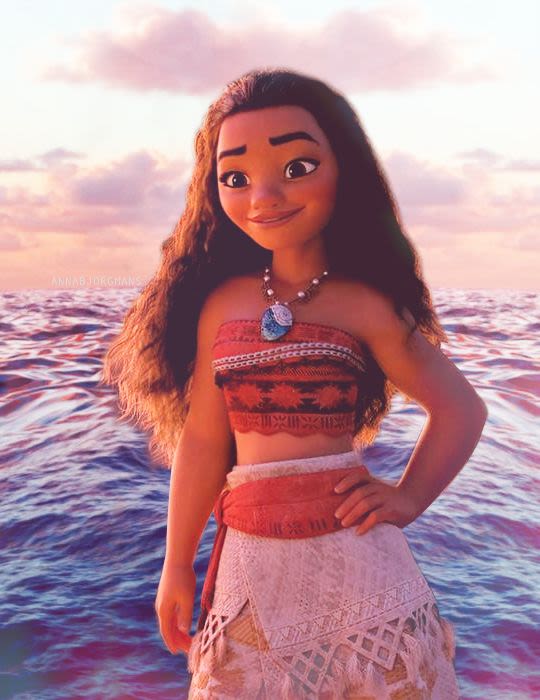
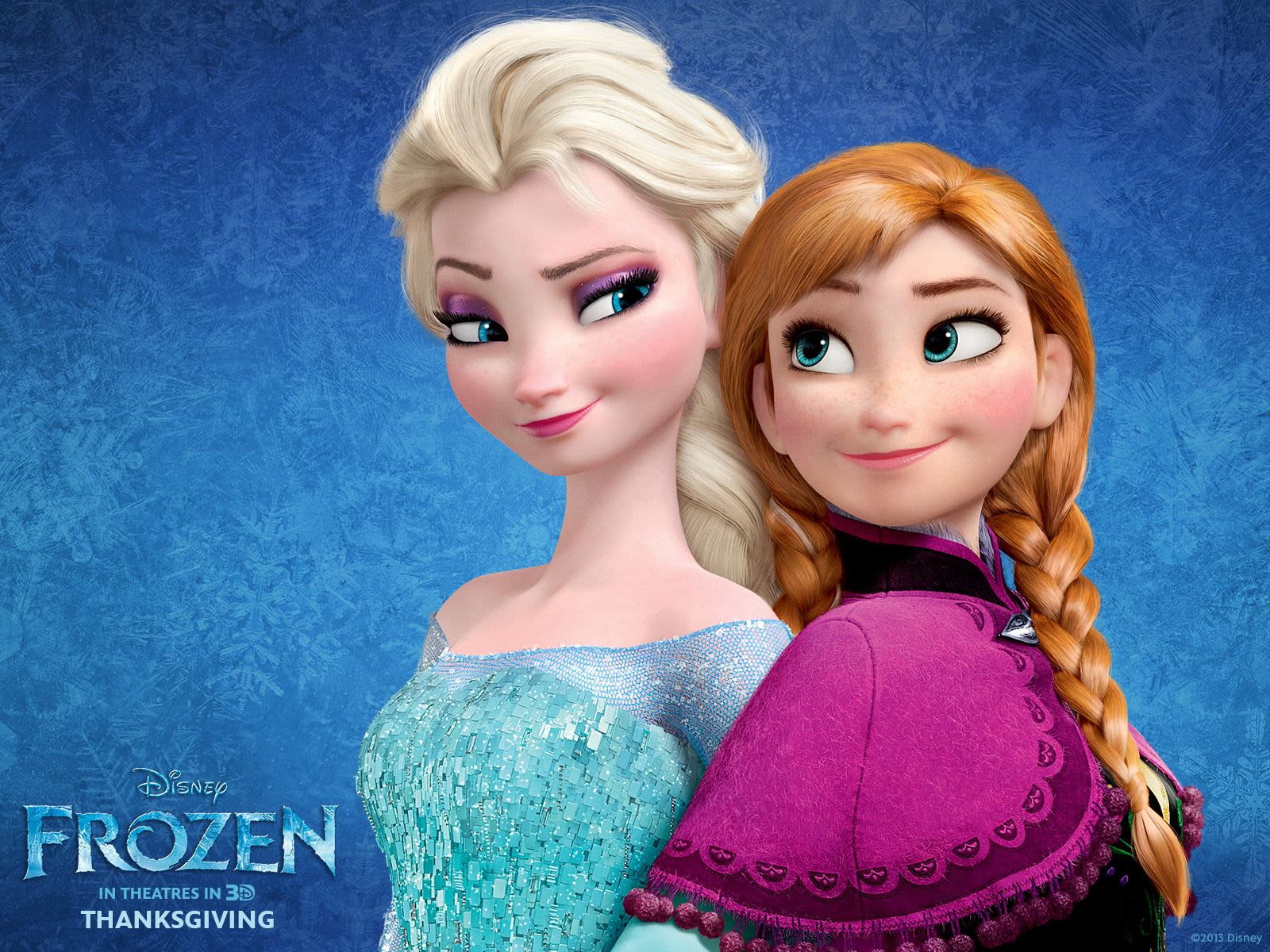
The evolution of the princess formula & the girlbossification of Disney
This video showcases how Disney has transformed the stereotypical princess into a 21st-century girl boss.
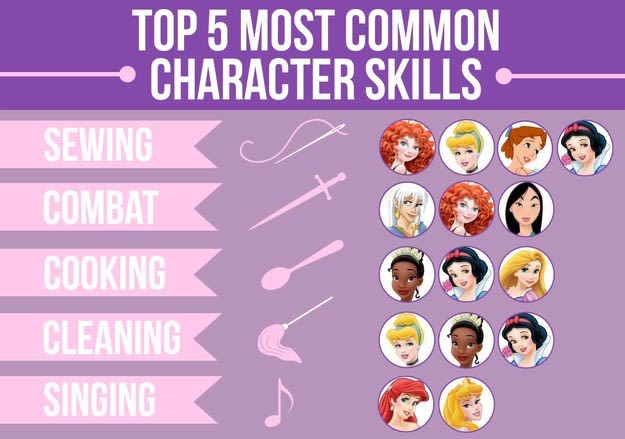
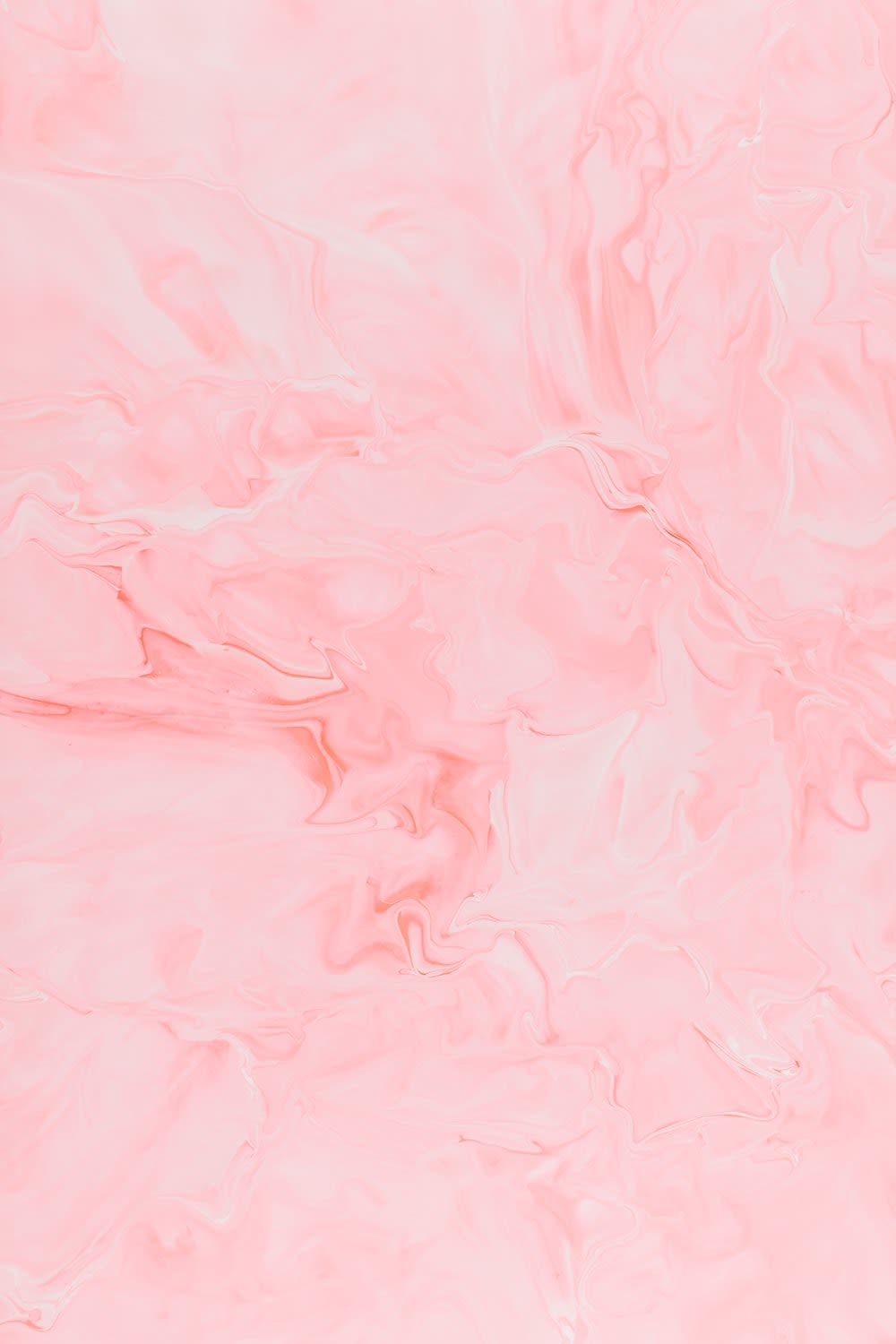
The lack of diversity in Disney Films
Over the past ten years, Disney has established itself as the world's leading provider of family entertainment. Disney is infamous for its representation of white princesses who are popular among young girls. Snow White and the Seven Dwarfs was Disney's first princess, released in 1937. The film's primary character, Snow White, is portrayed as a romantic person with innocent characteristics (Langyang, 2001). To appeal to a wider, more diverse audience and to demonstrate that Disney does welcome diversity, the company tried to portray more diverse princesses that represent different nationalities after globalization. They achieved success in their recent endeavor to reach into a more diversified market with the release of Moana.
Disney still lacks diversity in both skin color and narrative in terms of representation. Disney's early efforts to promote diversity included the publication of Pocahontas and Princess Jasmine (Aladdin). However the characters are portrayed in an unrealistic way. In addition to having dark complexion, the characters are still depicted with an unrealistically small waist, delicate limbs, and a full chest. These princesses' portrayal reflects the Western ideal of beauty (Johnson, 2015). For the young children who are seeing these movies, this is quite detrimental. Children may experience body dysmorphia at a young age due to the exaggerated body proportions that are portrayed (Yakubovsky, 2021). Compared to the earlier princesses, the more recent Disney princess Moana is a better portrayal. With beautiful hair, wide eyes, and a slender physique, Moana nonetheless satisfies the Disney norm of ideal beauty. Disney tries to portray Moana more realistically and accurately, yet it still causes more harm than good. These expectations cause young children to accept the unattainable ideal of what it means to be a girl.
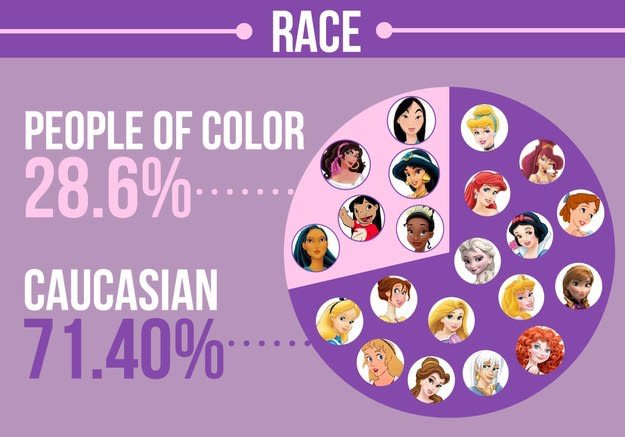

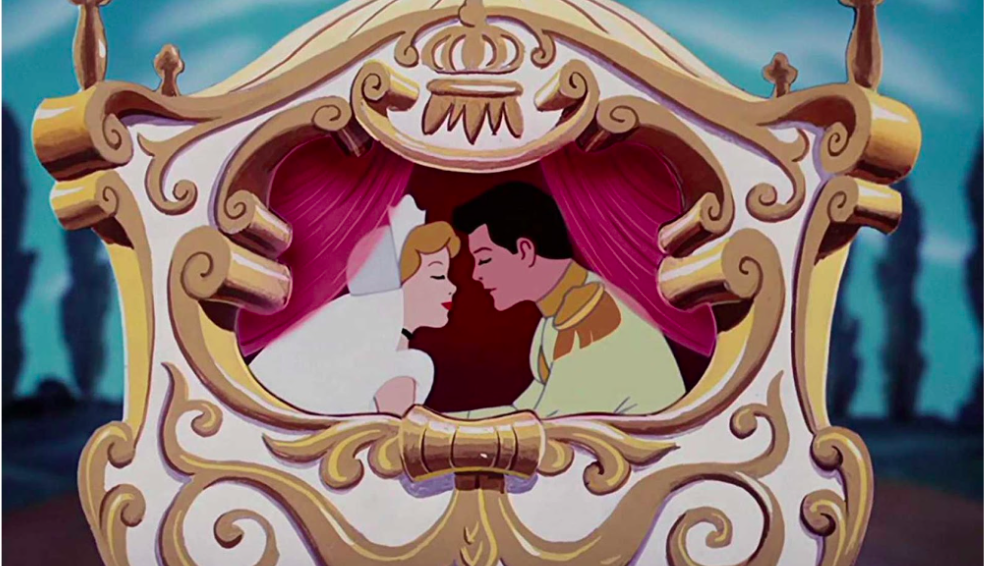
Lack of diversity affects the Disney princesses' stories as well. The majority of earlier Disney princess films follow the same formulaic plot where the princess is a damsel in distress waiting for the prince to save her. This serves to foster the notion that women are helpless without men and require continual assistance. The pleasant conclusion in which the princess wed the prince and led a happy life simply serves to reinforce unrealistic notions of love. Disney changed the formulaic plot with the release of Frozen, which led to a favorable reaction from the audience. Disney put more of an emphasis on Elsa and Anna's sister connections than on her quest to find true love from a prince.
Disney then released Moana in 2016 in an effort to make a more accurate film about the Pacific Islands. Multiple Pacific Island cultures, particularly the Polynesian, were featured throughout the film and had an influence on the story. The false sense of diversity that Disney fabricated in the film calls into doubt the authenticity of the film's narrative. Disney tries to defend the authenticity by saying that they performed their homework (Scriretta, 2016), yet the movie's mixing of cultures demonstrates their ignorance of the Pacific Islands. Disney's "representation" of the Pacific Islands simply serves to romanticize the region and causes more harm than good for the indigenous residents. The movie's generalization of Pacific culture leads to destructive and harmful preconceptions about what Pacific people are like.


References
Bechdeltest.com. (2019). Bechdel Test Movie List. [online] Available at: https://bechdeltest.com/
Bowers, R. (n.d.). Gender Representation in Disney Animation | RHEA BOWERS. [online] Available at: https://rheasblog.myblog.arts.ac.uk/2018/02/06/the-use-of-gender-representation-in-disney-films/
Fernando, B. (2022). Explained: The controversy around Disney movie Snow White and the Seven Dwarves. [online] The Indian Express. Available at: https://indianexpress.com/article/explained/snow-white-and-the-seven-dwarves-disney-controversy-explained-7743227/
Harris, A. (2016). Moana Makes It Official: Disney Has Entered a Progressive, Inclusive Third Golden Age. [online] Slate Magazine. Available at: https://slate.com/culture/2016/11/with-moana-frozen-big-hero-6-and-zootopia-disney-has-entered-an-inclusive-third-golden-age.html#:~:text=Moana%20Makes%20It%20Official%3A%20Disney,Progressive%2C%20Inclusive%20Third%20Golden%20Age&text=Four%20films%20from%20Disney%20Animation’s,6%2C%20Zootopia%2C%20and%20Moana
Johnson, R. M. (2015), ‘The Evolution of Disney Princesses and their Effect on Body Image, Gender Roles, and the Portrayal of Love’. Educational Specialist. Available at: https://citeseerx.ist.psu.edu/viewdoc/download?doi=10.1.1.933.5026&rep=rep1&type=pdf
Layng, J. M. (2001). ‘THE ANIMATED WOMAN: The Powerless Beauty of Disney Heroines from Snow White to Jasmine’. The American Journal of Semiotics, 17(3), 197-215. Available at: https://www.proquest.com/scholarly-journals/animated-woman-powerless-beauty-disney-heroines/docview/213749805/se-2
Narsaria, A. (2020). How Disney Female Characters Are Changing The Way We Look At Women? [online] Science ABC. Available at: https://www.scienceabc.com/humans/movies/how-is-disney-changing-the-way-we-look-at-women.html.
psychology.hanover.edu. (n.d.). Hanover College Psychology Department : Psychology Department : Hanover College. [online] Available at: https://psych.hanover.edu/research/Thesis12/papers/Sims%20Paper.pdf.
Sciretta, P. (2016, September 7). How Disney Formed The Oceanic Story Trust To Make 'Moana' More Authentic. [Online] Slash Film. Available, https://www.slashfilm.com/546367/moanaoceanic-story-trust/ [Accessed 25 September 2022]
Yakubovsky, J. (2021). Disney Princess films and their effects on Gender and Body image through the Social Learning theory. Unpublished thesis (B.A), Arcadia University. Available at: https://scholarworks.arcadia.edu/showcase/2022/media_communication/3

